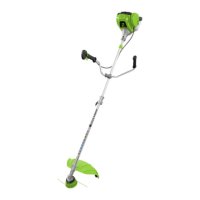Why my ZIPPER MASCHINEN Cutter engine does not start?
- BBrandi AllenAug 13, 2025
If the ZIPPER MASCHINEN Cutter engine won't start, make sure you're using the correct starting sequence. Other possible causes include a dirty air filter (clean or replace it), no fuel supply (refuel), a fault in the fuel line (check for kinks or damage), a flooded engine (screw off, clean, and dry the spark plug, then pull the cranking rope several times and reinstall the spark plug), a disconnected spark plug connector (place it on), or no ignition spark (clean or replace the spark plug and check the ignition cable).

